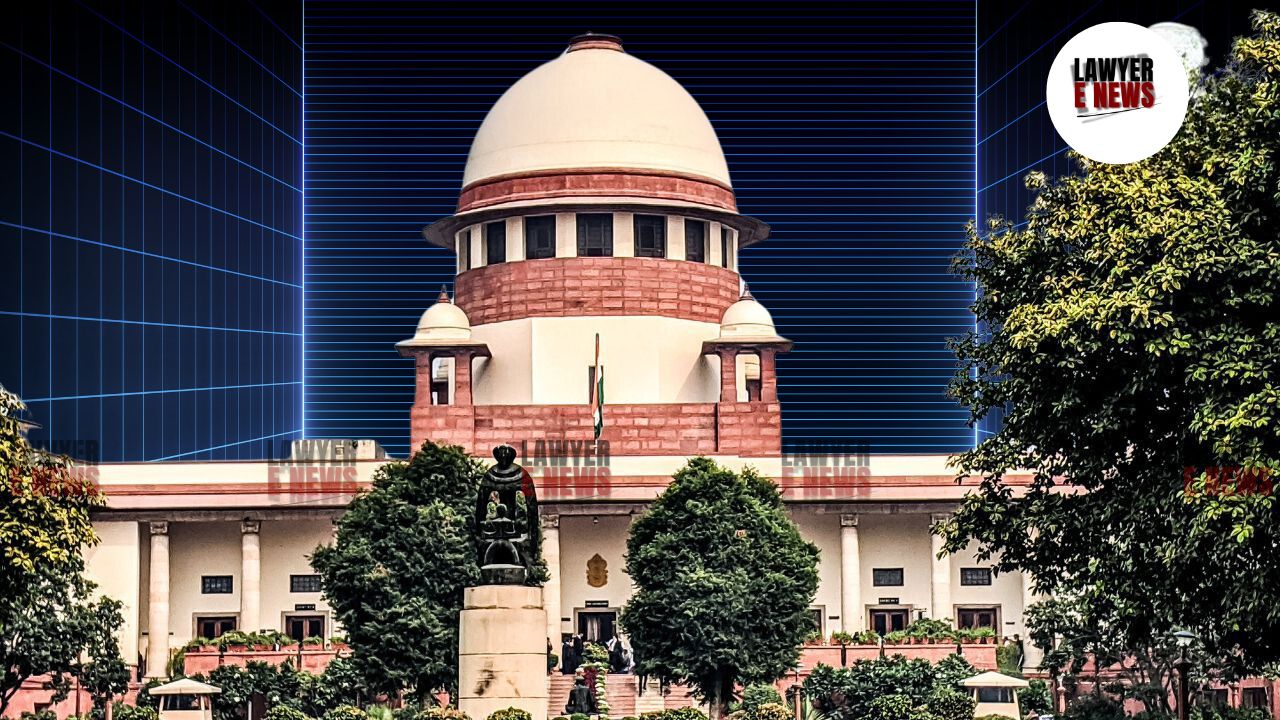-
by Admin
17 December 2025 10:13 AM



Supreme Court of India upheld the State Government’s authority to levy royalty on the excavation of brick earth under the Mines and Minerals (Regulation and Development) Act, 1957, and the Punjab Minor Mineral Concession Rules, 1964. It reversed the Punjab and Haryana High Court’s decision, which had favored the brick kiln owners, and reinstated the Trial Court’s dismissal of the suits. The Court emphasized that the State’s right to levy royalty does not depend on the ownership of the land from which the minor mineral is extracted.
The bench, comprising Justice Abhay S. Oka and Justice Ujjal Bhuyan, clarified that brick earth, declared a minor mineral by a 1958 notification under Section 3(e) of the Mines and Minerals (Regulation and Development) Act, could attract royalty irrespective of land ownership. The judgment also reaffirmed that disputes regarding royalty must be resolved through the statutory appellate remedy provided under Rule 54F of the Punjab Minor Mineral Concession Rules, 1964, barring civil suits in such matters.
The dispute arose when the State of Punjab levied royalty on brick kiln owners for excavating brick earth, which they used in manufacturing bricks. The brick kiln owners, who had leased private lands for the purpose, argued that brick earth was not owned by the State, as per the village record of rights (Wajib-ul-arz), and therefore, the State could not impose royalty. They relied on Section 42(2) of the Punjab Land Revenue Act, 1887, which presumes ownership of quarries to vest in the landowners if records completed after November 18, 1871, do not expressly vest such ownership in the State.
The State, however, contended that under Section 15 of the Mines and Minerals (Regulation and Development) Act, 1957, it had the power to make rules for regulating minor minerals and collecting royalty. It argued that brick earth was declared a minor mineral under a notification issued in 1958, and royalty could be imposed under the Punjab Minor Mineral Concession Rules, 1964.
The Trial Court dismissed the suits filed by the brick kiln owners in 1983, holding that the State was entitled to levy royalty as brick earth was a minor mineral, and the ownership of the land was irrelevant to the issue of royalty collection. The First Appellate Court upheld the dismissal. However, the Punjab and Haryana High Court, in 2007, reversed these decisions, holding that the State could not levy royalty without proving ownership of the brick earth.
The Supreme Court, while reversing the High Court’s judgment, noted that the declaration of brick earth as a minor mineral under the Mines and Minerals (Regulation and Development) Act, 1957, gave the State the authority to levy royalty irrespective of the ownership of the land or mineral. It observed that once brick earth is categorized as a minor mineral, the levy of royalty is linked to its excavation and use, not ownership of the land.
The Court referred to Section 42 of the Punjab Land Revenue Act, 1887, which creates presumptions about ownership of quarries and wastelands. For records completed before November 18, 1871, ownership is presumed to vest in the State unless expressly stated otherwise. For records completed after that date, ownership is presumed to vest in landowners unless recorded as belonging to the State. However, the Court held that these presumptions were irrelevant to the State’s right to levy royalty under the Mines and Minerals (Regulation and Development) Act, 1957, and the Punjab Minor Mineral Concession Rules, 1964.
The Court also highlighted that under Rule 54A of the Punjab Minor Mineral Concession Rules, no person can undertake quarrying or mining operations without approval from the State Government. Rule 54C allows the State to assess royalty on the production and disposal of minor minerals. Thus, the State’s authority to levy royalty on brick earth is based on statutory rules and does not depend on land ownership.
The Court further noted that Rule 54F provides an appellate remedy against royalty assessments, and civil suits challenging such assessments are barred. The brick kiln owners should have availed the statutory remedy instead of filing civil suits.
The Supreme Court held that the High Court erred in focusing on the ownership of brick earth and ignoring the statutory framework under the Mines and Minerals (Regulation and Development) Act and the Punjab Minor Mineral Concession Rules. It ruled that the levy of royalty was valid and that disputes regarding the quantum of royalty should be addressed through statutory appeals under Rule 54F of the Punjab Minor Mineral Concession Rules.
The Court reinstated the Trial Court’s dismissal of the suits and clarified that it had not adjudicated the issue of ownership of the lands from which brick earth was excavated. It emphasized that ownership of the land was irrelevant to the State’s authority to levy royalty on minor minerals.
The Supreme Court’s ruling reaffirms the principle that the levy of royalty on minor minerals is governed by statutory rules and does not depend on land ownership. The judgment highlights the importance of utilizing statutory remedies for disputes over royalty assessments, rather than filing civil suits. By restoring the Trial Court’s dismissal of the suits, the Court has upheld the State’s right to levy royalty on brick earth, providing clarity on the scope of its authority under the Mines and Minerals (Regulation and Development) Act, 1957.
Date of decision: January 21, 2025
